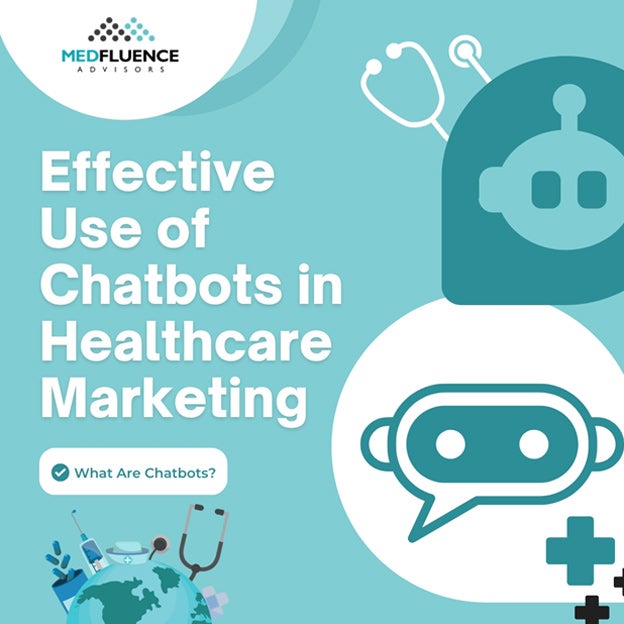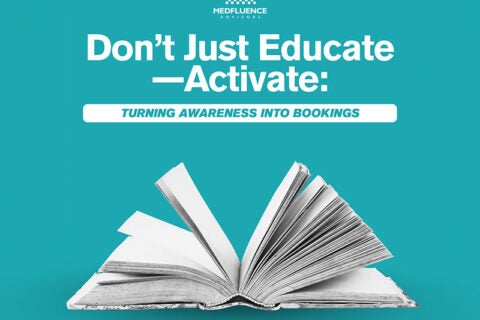Effective Use of Chatbots in Healthcare Marketing
Imagine a patient with a sore throat messaging their health system’s chatbot at 7:22 p.m. on a Thursday night. The AI tool takes a symptom history, determines that the patient’s primary care doctor is booked, and schedules them at a nearby urgent care in the morning. If concerning symptoms had been flagged—say, fever and drooling in a child—the chatbot would have prompted an immediate emergency evaluation.
That’s not science fiction. AI chatbots are already doing this. But it’s just the beginning.
Large language models (LLMs) like OpenAI’s ChatGPT and Google’s Med-PaLM are unlocking new possibilities for healthcare communication. From virtual triage and patient navigation to mental health screening, appointment scheduling, chronic disease support, and even clinical documentation, generative AI has the potential to help healthcare systems deliver faster, more affordable, and more personalized care.
But unlocking that potential responsibly will require clear-eyed attention to risk, workflow design, regulation, and trust.

📈 The Opportunity: Better Access, Lower Costs
The U.S. faces an access crisis. Nearly 100 million Americans live in healthcare shortage areas (KFF), and demand is rising with an aging population and rising rates of chronic illness.
Meanwhile, healthcare costs continue to skyrocket, with administrative burden alone accounting for up to 25% of total U.S. healthcare spending (JAMA).
Generative AI offers a path forward.
AI chatbots could help healthcare systems scale basic services—starting with triage, where they could collect symptoms, flag red flags, and direct patients to the right level of care. This use case is already being explored by providers like Mayo Clinic (Mayo Clinic Platform) and UC San Diego Health, which are piloting GPT-based tools for patient communication.
💬 Conversational AI That Actually Talks Like a Human
Unlike past-generation chatbots that followed rigid decision trees, generative AI tools can generate responses dynamically and conversationally.
This opens the door to better patient engagement, particularly for underserved groups. For example, studies show that AI chatbots can reduce barriers in populations that may struggle with reading, fear medical systems, or need support in different languages (Stanford Medicine).
In primary care, this could mean:
- Collecting intake data before appointments
- Answering common patient questions (e.g., “How should I take this medication?”)
- Following up after a visit with reminders and education
- Monitoring chronic diseases through check-ins
One study even found that patients rated AI-generated answers to health questions as more empathetic than physician responses (JAMA Internal Medicine)—a reminder that chatbots, when done right, can enhance rather than diminish connection.
🧠 Mental Health: A Promising Frontier
Mental health care is among the most promising areas for chatbot innovation. Nearly one in five U.S. adults experiences mental illness (NIMH), but many go untreated due to stigma, cost, or lack of access.
AI chatbots—especially those trained with trauma-informed, culturally sensitive language—could help expand reach for low-acuity mental health support. Tools like Wysa and Woebot have already shown encouraging results in early trials (Nature Digital Medicine).
However, for moderate or severe mental health conditions, human support is still essential—and AI must be carefully monitored to avoid missed signs of crisis or inappropriate advice.
🤖 Workflow Automation That Reduces Clinician Burnout
Beyond patient-facing tools, AI chatbots can streamline backend workflows, including:
- Clinical documentation
- Prior authorization
- Patient messaging and follow-ups
- Billing support
A 2023 McKinsey report estimated that generative AI could automate tasks representing 10–15% of clinicians’ time, freeing them up for higher-value care.
Systems like Epic, Doximity, and Microsoft Nuance are now embedding LLMs into EHR workflows. In pilot studies, physicians report saving hours per week on documentation (Epic Research).
That said, automation introduces new challenges: Are AI-generated chart notes accurate? Are chatbots drafting messages patients might misinterpret? Every deployment needs human oversight, especially in the early stages.
⚠️ The Risks: Bias, Safety, and Hallucinations
AI tools can also go dangerously off course. LLMs can “hallucinate” false information, misinterpret symptoms, or reflect the biases embedded in their training data (Nature).
In a clinical setting, that could be deadly.
Chatbots that sound confident but offer unsafe recommendations or miss key red flags could create a false sense of security—or worse, harm patients. That’s why regulatory bodies like the FDA, ONC, and European Medicines Agency are developing frameworks to assess the safety, accuracy, and transparency of AI tools (FDA).
Equity is another major concern. If AI models are trained mostly on data from affluent, insured, English-speaking patients, they may perform poorly in populations with different demographics or healthcare needs (NEJM AI).
Bias in, bias out.
Developers and healthcare systems must prioritize representative datasets, continuous monitoring, and clear escalation pathways to human support.
🧪 Trust, Transparency, and the Path Forward
Patients want convenience—but not at the cost of safety or dignity.
In a recent Pew Research survey, 60% of Americans said they would be uncomfortable if their provider relied on AI to diagnose or treat them. At the same time, 38% said AI could improve care quality if used correctly.
The message? People are open—but cautious.
To succeed, chatbot deployments must:
- Disclose when patients are talking to AI
- Clarify what the chatbot can and cannot do
- Route complex issues to real people
- Continuously improve based on feedback and outcomes
In other words, trust is earned, not assumed.
🚀 Conclusion: A New Kind of Clinical Partner
AI chatbots aren’t replacements for clinicians—they’re powerful assistants that can help healthcare systems scale.
They can’t perform surgery or deliver a difficult diagnosis. But they can save time, reduce costs, expand access, and give patients the kind of responsive, round-the-clock support they increasingly expect.
The next generation of care will be team-based, tech-enabled, and deeply human—with chatbots as part of the front line.
The question isn’t whether to use them. It’s how to do so responsibly, equitably, and well.


